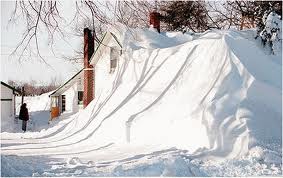I answer literally hundreds of building related questions every day. These questions come from many different sources – our staff, drafts people, engineers, architects, building officials, clients, builders and social media (just to name a few).
This question, posted in a Facebook group, is an exceptional one and I felt it necessary to share:
 “What makes some buildings better than others? And at what point does it not matter? (Ex: building A frames with 2x4s. Building B uses 2x6s and building C uses 2x12s obviously B is better than A but C is overkill) Does the metal come down just to the thickness of it? Thicker is probably better but to what end? I’m talking straight materials not warranty or service of a company. Thank you.”
“What makes some buildings better than others? And at what point does it not matter? (Ex: building A frames with 2x4s. Building B uses 2x6s and building C uses 2x12s obviously B is better than A but C is overkill) Does the metal come down just to the thickness of it? Thicker is probably better but to what end? I’m talking straight materials not warranty or service of a company. Thank you.”
This answer actually has a remarkably simple answer. It all comes down to what loads a building is engineered for.
Period.
Not what some under educated person says makes it better, but what a highly trained Registered Professional Engineer is willing to stake their career upon by putting their name and seal on a set of plans.
You want a stronger building (whether post frame, weld up, PEMB, stick frame, etc.) then increase snow and/or wind design loads.
It is seriously just this simple.
It does no good to have super thick siding and roofing, if the supporting frame is not able to carry equivalent loads.
I once had a client who was “concerned about snow loads” so wanted 2×8 roof purlins (when 2×6 would easily have carried the loads). I asked him what was going to hold those purlins up (a sky hook maybe) when his building’s trusses failed beneath them.
A building is a complete system.
When you hear a supplier or builder talking about how their bigger/stronger/thicker whatever makes their building best, think B.S., because they do not have a clue about structural design.
When you find the rare gem who advises you they are providing a fully engineered building and recommends above Code required minimum loads – stick to them like super glue, as this is truly a better design solution.
Here is just one example of when bigger isn’t always better: https://www.hansenpolebuildings.com/2014/08/lumber-bending/
I hired my first staff engineer roughly 35 years ago, Jenny Wong. Jenny’s previous experience was as a design engineer for a nuclear power plant (seriously). Jenny knew absolutely nothing about post frame buildings, but was willing to totally trust me – provided I could find documentable proof from reliable sources. This one requirement alone shaped my professional career.
Ask me any post frame building questions, any time. If I cannot get you an answer, I will let you know. My answers will always be based upon factual evidence. If you find some method or component with an ability to make buildings better, without unduly penalizing new building owners financially please share it with me – I will perform due diligence to prove or disprove it and if it is truly beneficial, expect to see it in your next Hansen Pole Building.








